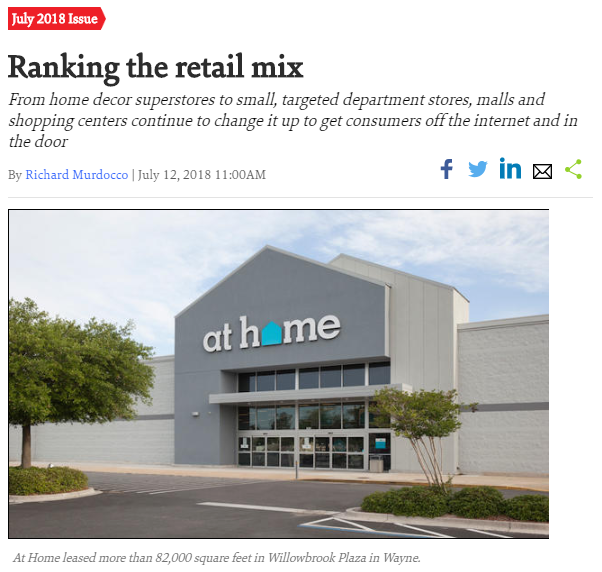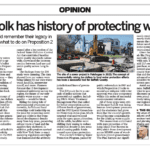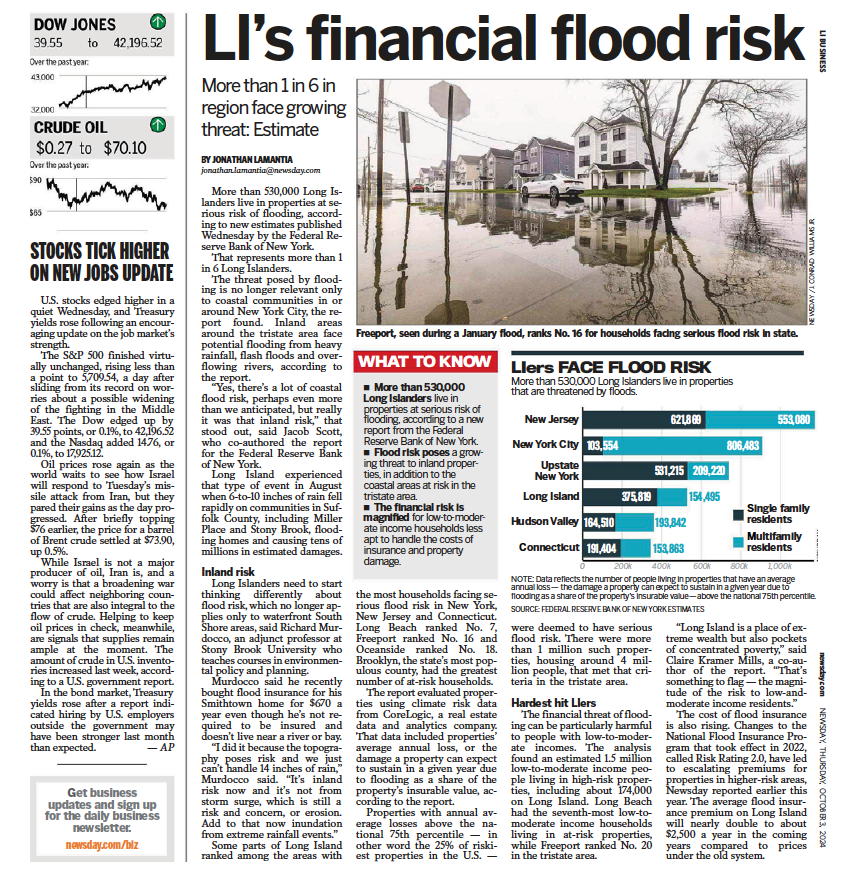The following was originally published in the special New Jersey edition of The Real Deal in July 2018. You can read the original here. Interested in supporting The Foggiest Idea’s award-winning reporting and analysis? Click here.
With brick-and-mortar retail still struggling to adapt to a new normal in the wake of the Amazons of the world, the traditional shopping center may seem poised to go the way of the dodo, eight-track and VCR.
New Jersey appears to be no exception, but retail in the state is not going down without a fight. Retail owners are looking to reinvent themselves with 21st-century concepts that focus on customer experience and, in some instances, mixed uses, including housing.
Retail vacancy rates in suburban New Jersey have been hovering around 6 percent, according to Chuck Lanyard, president of the Goldstein Group, a retail brokerage in Paramus. To Lanyard, the vacancy rate isn’t alarming, all things considered. “It’s very good, considering that approximately 2 percent of that is in flux due to approval processes or redevelopment plans,” he said.
The Real Deal’s ranking of the 10 biggest retail leases by square footage from May 2017 to April 2018 shows that businesses focusing on home decor, wellness and the consumer experience are taking the most space. Restaurants and grocery stores are also helping shopping centers keep up foot traffic. TRD’s analysis looked at the biggest leases closed in Essex, Bergen, Hudson, Morris and Passaic counties. All but one of the deals in the top 10 were new leases.
Leasing big
Where some retailers are shrinking their footprint, At Home is going big. The Texas-based home decor store signed the biggest lease in the counties surveyed with a new store in Wayne, which had three of the top 10 leases in New Jersey. At Home leased more than 82,000 square feet in Willowbrook Plaza, merging two vacant spaces into one. It replaced K&G Fashion Superstore, which relocated in the area, and Sports Authority, which filed for bankruptcy and closed in 2016.
The sheer size of At Home’s stores, which average around 110,000 square feet, runs counter to much of the brick-and-mortar narrative in the last few years.
Down the road from the new At Home location, Dave & Buster’s took the fourth spot on the ranking, with a 48,000-square-foot lease at the Willowbrook Mall, a 49-year-old shopping center that has been trying to reinvent itself in recent years to grapple with the shifts in the retail sector. Also in Wayne, Whole Foods had the fifth-largest lease, with 36,000 square feet at a former A&P location in the Valley Ridge Shopping Center that had been empty since 2015.
“Net rates in Wayne range from the low $20s in the strip centers along Route 23 to the mid-$50s in the Wayne Town Center area,” said Jordan Cohn, a partner with the Shopping Center Group’s New York City office.
According to Cohn, Wayne in particular has become a retail hot spot because of redevelopment, and he has seen a number of leases in or around the Willowbrook Mall, Willowbrook Plaza and Wayne Town Center. “New Jersey’s retail market is strong, especially in the top markets like Wayne and Parsippany,” he said. “We are seeing continued demand for space in the best regional markets.”
Over in Parsippany, Target had the year’s second-largest lease, with just over 65,000 square in the Troy Hills Shopping Center, filling space left behind by Pathmark. It’s one of two smaller-format Targets in New Jersey, roughly half the size of a traditional Target. The concept was originally developed to cater to space-constrained urban areas, but the model has proven successful in the suburbs, too. Target says the smaller stores are more profitable per square foot than larger locations and feature more localized products.
Cohn told TRD that he estimates rents currently hover between the mid-$20s and mid-$30s across Parsippany.
The third-biggest lease went to Weis, a food retailer based in Sunbury, Pennsylvania. Like Whole Foods in Wayne, Weis converted a 54,200-square-foot former A&P location in Randolph for its latest store.
Another grocery store, Giant Farmers Market, took the ninth spot on TRD’s list, leasing 25,337 square feet in Waldwick. The store opened at the end of May in a former Stop & Shop spot.
Other big leases included a 34,000-square-foot LA Fitness in Newark at No. 6 and another home decor store, Homesense, with 26,550 square feet in Paramus, taking the list’s eighth spot.
Survival of the fittest
Many landlords in New Jersey are looking at new ways to fill their space and are increasingly turning to tenants that bring in bodies.
One sector that is blossoming, according to Goldstein’s Lanyard, is food service. “We are seeing strong activity in the restaurant sector, especially in the quick-serve category, including Chipotle, Chick-fil-A and Mediterranean grills,” Lanyard said. Other retailers that are active in the market include pet stores, urgent care centers and clinics that focus on physical therapy or dental care.
In more densely populated urban areas, multifamily developments are helping to drive growth.
“Multiple residential buildings are providing first-floor retail space,” Lanyard said. “There is a great demand for the space to be filled and accommodate the needs of both the tenants within the building and the surrounding neighborhood.”
Jason Gerbsman, managing principal of Manhattan-based HUDSON, a commercial real estate firm that specializes in retail in the New York metro area, has found success in leasing retail spaces to tenants that provide services a consumer simply cannot replicate online.
For example, in Denville, west of Parsippany in Morris County, Gerbsman recently leased 2,500 square feet to the Goldfish Swim School. Landlords used to bristle at such deals, but no more.“Imagine the reaction of a landlord to the idea of placing a full-size swimming pool in a shopping center a few years ago,” Gerbsman joked.
Still, New Jersey “is one of the strongest suburban markets,” he told TRD. He cited the relative strength of Paramus, home to Garden State Plaza. It’s one of the top-producing malls in the country, despite the fact that shopping is prohibited on Sundays.
In the northern and central parts of the state, “grocery stores, restaurants, hair salons and urgent care centers are dominating the retail market,” according to the Short Hills-based Blau & Berg Company’s market report for the first quarter of 2018. In those areas the vacancy rate was holding steady at 6.7 percent for the first quarter, with average asking rates also relatively unchanged at $22.10 per square foot. In 2017, the firm reported that the vacancy rate during the same period was 6.1 percent.
In Hackensack, the Shops at Riverside, a luxury mall that opened in 1977, is in the process of reinventing itself once more. It was first renovated in the 1990s, only to be expanded once again shortly after the turn of the millennium.
This time around, the changes include the creation of a luxury lounge and concierge service providing personal shopping, package delivery, coat check and valet parking. In addition, Simon Property Group, the complex’s owner, will add renovated and covered garages and a state-of-the-art parking assist system.
Bloomingdale’s, an anchor tenant at the center, will be undergoing renovations as well, part of a $2.1 billion overhaul at 33 of Simon’s malls. Under the direction of its chairman and CEO, Tony Spring, Bloomingdale’s is enhancing the department store experience by creating spaces for customers to explore products.
The changes to the Shops at Riverside and Bloomingdale’s reflect the needs of today’s consumer, experts said. More retail sites will likely devote additional space to enhanced experiences, restaurants and entertainment tenants in attempts to curb vacancies and get people back to the mall.
Undeniably, the road ahead is rocky. “Numerous enclosed malls throughout New Jersey will continue to experience difficulty in maintaining tenants,” Lanyard said. “It is part of the national trend of regional malls being less and less frequented by retail customers. Going to a regional mall is no longer the national family pastime, as it was less than a decade ago.”
That being said, both Gerbsman and Lanyard noted that not all retail centers are struggling to the same degree that the larger malls are, and positive experiences will have the ability to drive future success stories.
“There isn’t much suffering to be found in the retail centers that appeal to higher-income demographics,” Gerbsman said. “It’s really the outskirts, or areas oversaturated with retail, that are suffering. It’s in those areas where landlords are looking to make deals.”
Lanyard agreed, saying that both secondary and tertiary retail areas have been a lot slower to lease. “Now it is all about service, amenities, food and fitness,” Gerbsman said. “That’s the state of retail today.”










